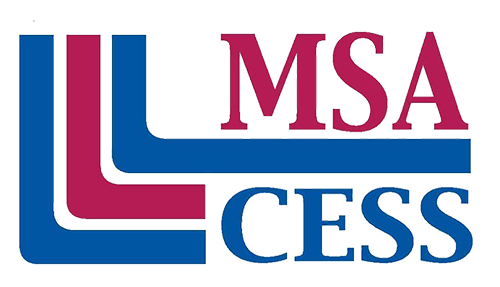In this series, join ACI Medical & Dental School in discovering the dynamic and diverse world of Medical Assisting as we explore the various opportunities available in the healthcare industry. Today, we’ll focus on Medical Assistants’ critical role in Physical Medicine and Rehabilitation. We’ll delve into all the amazing contributions they make to help patients recovering from injuries or disabilities get back on their feet and improve their overall quality of life.
March is Disability Awareness Month, and it’s vital to recognize the essential role that healthcare professionals, including Medical Assistants in physical medicine and rehabilitation (PM&R), play in supporting individuals with disabilities. As a Medical Assistant in PM&R, you have a crucial responsibility to assist patients with disabilities and help them achieve their rehabilitation goals. Your role involves various tasks, including taking patients’ medical histories, conducting diagnostic tests, providing patient education, and assisting with mobility needs. By providing compassionate care and support, you significantly improve the quality of life for individuals with disabilities.
Patient Intake and Documentation
Taking a patient’s medical history and documenting their current symptoms and complaints is critical to your job. The information provided is the foundation for developing a comprehensive treatment plan tailored to the patient’s needs. When taking a patient’s medical history, you will ask questions about their medical background, including any previous surgeries, medical conditions, or allergies. You will also inquire about their symptoms and complaints, such as pain, stiffness, or weakness. You may also ask about the patient’s lifestyle, diet, exercise routine, and any medications or supplements they are taking.
Documenting this information in electronic medical records is crucial for healthcare providers to develop a comprehensive treatment plan. Providers can develop a treatment plan that addresses the patient’s needs and goals by accessing the patient’s medical history and current symptoms. The accuracy and completeness of the patient’s medical history and present symptoms documentation are crucial for success. Medical Assistants, you must be meticulous when recording this information and ensure that all relevant details are captured accurately and promptly.
Patient Mobility and Transfers
Assisting patients with limited mobility or transferring from one location to another is crucial to your job. Patients often have physical disabilities from accidents, illnesses, or congenital conditions. As a result, they may need help with activities of daily living, such as transferring from one place to another, moving from a wheelchair to an examination table, or simply changing positions.
Your role includes providing physical assistance to these patients, which can significantly impact their comfort level and overall experience. Patients who experience pain or discomfort during transfers or in an uncomfortable position may be less likely to participate in rehabilitation programs, which can delay their recovery and impact their quality of life. Your support can help patients feel more comfortable and confident during transfers and other activities. You may assist with lifting, positioning, or transferring patients, ensuring their safety and comfort. By doing so, you play a critical role in the patient’s recovery process, making it easier for them to participate in rehabilitation activities and achieve their treatment goals.
Assisting patients with limited mobility also requires you to be knowledgeable about assistive devices such as walkers, canes, and wheelchairs. You may need to help patients use these devices correctly, adjust them for comfort, and ensure they are in good working condition. This knowledge helps patients make the most of these devices and improves their mobility and independence. Your support also includes considering patients’ mobility needs when scheduling appointments or preparing treatment rooms. For example, if a patient requires a wheelchair, you must ensure that the examination room is accessible, and that equipment is in place to assist with transfers.
Providing Patient Education
Patient education is an essential part of your role in helping patients with disabilities achieve their rehabilitation goals. Patient education involves providing information to patients about their condition, treatment options, and strategies for managing their symptoms. One crucial aspect of patient education is giving information about assistive devices. Many patients with disabilities may need to use assistive devices such as wheelchairs, walkers, or prosthetic devices to help them move around and perform activities of daily living, by undertaking this position, you may help patients understand how to use these devices correctly, maintain them, and troubleshoot any issues that may arise.
Another crucial patient education component is providing information about physical therapy exercises and other rehabilitation techniques. Patients with disabilities may need to perform specific activities or participate in rehabilitation programs to improve their mobility, strength, and range of motion. Now, helping patients understand the purpose of these exercises, how to perform them correctly, and any precautions or modifications they may need to make. By providing this information, you help patients take an active role in their care and develop a sense of empowerment and control over their condition. Educated patients are more likely to comply with treatment plans, make lifestyle changes supporting their rehabilitation goals, and achieve better outcomes.
Furthermore, patient education also involves helping patients understand their medical condition and treatment options. Patients may have questions or concerns about their diagnosis, treatment plan, or medications. You can help address these concerns by providing accurate and precise information in a way that is easily understandable to the patient.
Conduct Basic Diagnostic Tests
Operating basic diagnostic tests is essential to supporting healthcare providers and assisting patients with disabilities. These tests help healthcare providers assess the patient’s condition, monitor changes in their symptoms, and develop a treatment plan that addresses their unique needs.
One of the most common diagnostic tests that Medical Assistants perform is taking vital signs. Vital signs include blood pressure, heart rate, respiratory rate, and temperature. These measurements provide important information about the patient’s overall health and help healthcare providers monitor any changes or fluctuations that may indicate a worsening condition. In addition to taking vital signs, Medical Assistants may also measure the patient’s range of motion. Range of motion tests assess the patient’s ability to move their joints through their full range of motion. These tests help healthcare providers determine the extent of the patient’s mobility limitations and develop an appropriate rehabilitation plan that targets specific areas of weakness or stiffness.
Sensory tests are another diagnostic test that Medical Assistants in PM&R may perform. These tests assess the patient’s sense of touch, temperature, or pressure stimuli. Sensory tests are significant for patients with nerve damage or other neurological conditions that affect their ability to feel sensations in different parts of their bodies.
Supporting the Healthcare Team
Also, one of the significant roles of a Medical Assistant involves supporting the healthcare team. You work closely with physical therapists, occupational therapists, and other healthcare providers to ensure that patients receive the care they need, including assisting with scheduling appointments, preparing treatment rooms, and coordinating care plans.
Being a Medical Assistant in PM&R is crucial in helping patients with disabilities receive comprehensive care to manage their symptoms and achieve their rehabilitation goals. By closely collaborating with healthcare providers and providing compassionate support to patients, Medical Assistants play a vital role in enhancing the quality of life for individuals with disabilities. If you are interested in pursuing a credential in medical assisting, visit ACI.EDU to explore your options and start your journey toward making a meaningful difference in the lives of patients with disabilities.








